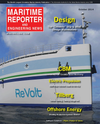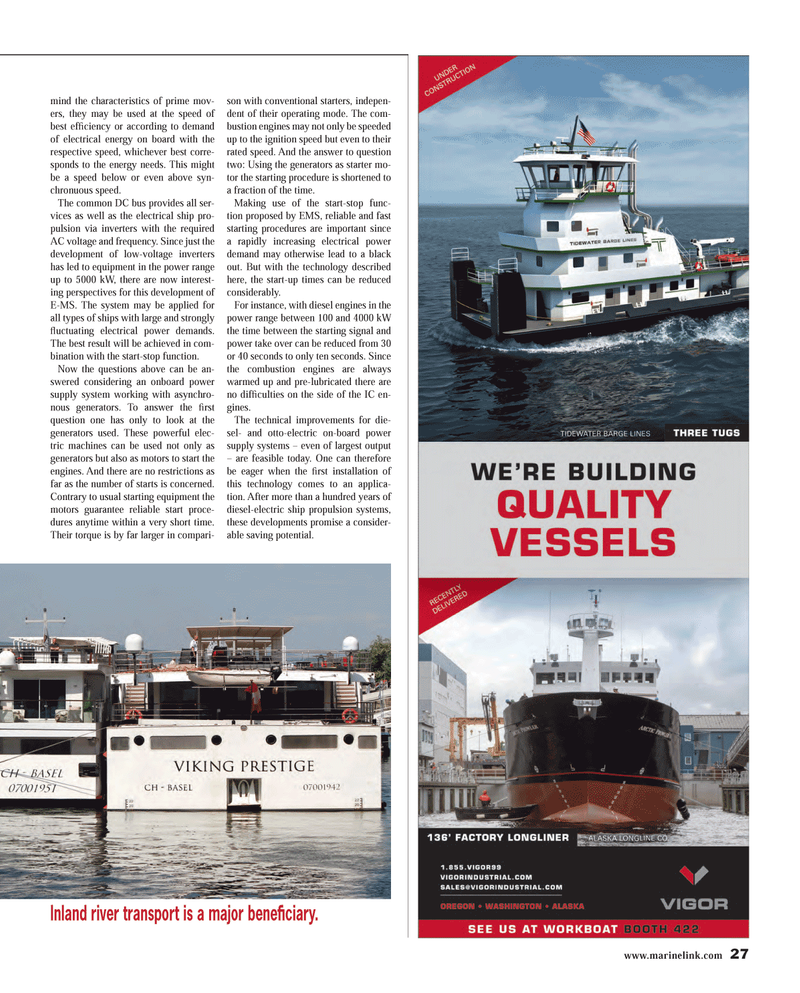
Page 27: of Maritime Reporter Magazine (October 2014)
Marine Design Edition
Read this page in Pdf, Flash or Html5 edition of October 2014 Maritime Reporter Magazine
www.marinelink.com 27 mind the characteristics of prime mov- ers, they may be used at the speed of best effi ciency or according to demand of electrical energy on board with the respective speed, whichever best corre- sponds to the energy needs. This might be a speed below or even above syn- chronuous speed.
The common DC bus provides all ser- vices as well as the electrical ship pro- pulsion via inverters with the required
AC voltage and frequency. Since just the development of low-voltage inverters has led to equipment in the power range up to 5000 kW, there are now interest- ing perspectives for this development of
E-MS. The system may be applied for all types of ships with large and strongly fl uctuating electrical power demands.
The best result will be achieved in com- bination with the start-stop function.
Now the questions above can be an- swered considering an onboard power supply system working with asynchro- nous generators. To answer the fi rst question one has only to look at the generators used. These powerful elec- tric machines can be used not only as generators but also as motors to start the engines. And there are no restrictions as far as the number of starts is concerned.
Contrary to usual starting equipment the motors guarantee reliable start proce- dures anytime within a very short time.
Their torque is by far larger in compari- son with conventional starters, indepen- dent of their operating mode. The com- bustion engines may not only be speeded up to the ignition speed but even to their rated speed. And the answer to question two: Using the generators as starter mo- tor the starting procedure is shortened to a fraction of the time.
Making use of the start-stop func- tion proposed by EMS, reliable and fast starting procedures are important since a rapidly increasing electrical power demand may otherwise lead to a black out. But with the technology described here, the start-up times can be reduced considerably.
For instance, with diesel engines in the power range between 100 and 4000 kW the time between the starting signal and power take over can be reduced from 30 or 40 seconds to only ten seconds. Since the combustion engines are always warmed up and pre-lubricated there are no diffi culties on the side of the IC en- gines.
The technical improvements for die- sel- and otto-electric on-board power supply systems – even of largest output – are feasible today. One can therefore be eager when the fi rst installation of this technology comes to an applica- tion. After more than a hundred years of diesel-electric ship propulsion systems, these developments promise a consider- able saving potential.
Inland river transport is a major benefi ciary.
MR #10 (26-33).indd 27 10/1/2014 9:40:17 AM

 26
26

 28
28
